
Brian Cherney
Eclipse (excerpt)
Listen to Eclipse (1972). Written by Brian Cherney. Performed by Mary Morrison (Soprano), Robert Aitken (Flutist), Marion Ross (Pianist).
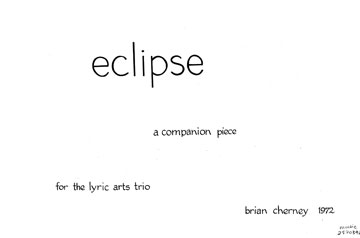
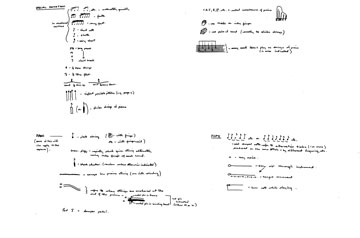
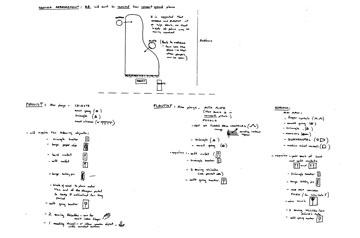
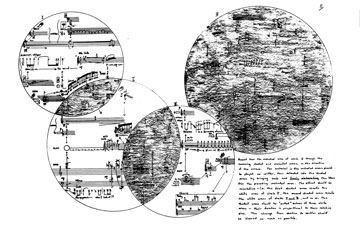
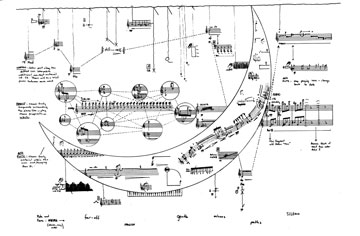
Eclipse (1972) is scored for soprano, flute and piano and was commissioned by the Lyric Arts Trio featuring soprano Mary Morrison, flautist Robert Aitken, and pianist Marion Ross. The text is drawn from the poem “Fun and Games” (1967-68) by Brian Hendersen. The piece is very demanding and challenges the players on a number of levels. In particular there is Cherney’s detailed use of extra techniques. For instance, in addition to the dazzling technical demands for the pianist, every part of the piano is used, and by all three musicians throughout the piece, from the lid of the keyboard, the metal crossbeams inside the piano, and the metal pins anchoring the strings at the end of the piano. The strings inside the piano are also used. These are plucked pizzicato style and strummed as on a harp, tapped lightly as on a dulcimer but with thimbles on the fingers of the players rather than small hammers; they are also beaten with mallets and with the palms of the players’ hands, and the lower strings are scraped along the wire winding with bobby pins and paper clips to create a harsh and dense percussive texture.
Percussions
Throughout the piece the musicians also make use of a variety of pitched and non-pitched percussion instruments including small gongs, triangles, finger cymbals, maracas, wood chimes, a cowbell, tuned bell crotales, and glockenspiel.
Musical Materials
The main musical materials are drawn from a small selection of melodic figurations and concepts used throughout the seven movements. These reflect the nocturnal and dreamlike imagery in the text and serve to unify the piece. One such melodic motive is a brief and fragmentary figuration made up of a constellation of pitches characterised by wide intervallic leaps spanning at times the registral extremes of the instruments and voice, a free rhythmic setting, and contrasts of dynamics. At times this “constellation motive” appears soft, furtive, and delicate, while at other times it is loud, impetuous and spastic. This evokes the reflective mirror and water imagery as well as the symbolism of fragmented memory and dreams in the text. The constellation motive is contrasted with a motive characterised by rhythmic pulsations at relatively regular intervals of time, generally on one pitch or alternating back and forth between two pitches. The rate of these rhythmic pulsations at each occurrence is never the same, therefore no “progression” is established in terms of the passage of time. Rather, the “pulsating motive” serves to further unsettle and suspend the listener’s perception of time passing in the music, reflecting the references to fragmented and suspended time in the text. There are also several instances of distinctive “shadow” sections throughout the piece, in which the musical momentum is momentarily suspended and previous materials are recalled in a hazy, dreamlike manner. The shadow sections are notated as collections of musical fragments from previous sections which are widely spaced and shaded over to varying degrees of opaqueness, indicating the desired level of obscurity of the materials. Shadow sections often appear as transitions between sections of more defined musical materials, or they interrupt the flow of an otherwise continuous musical texture. Also distinctive is the use of whispering and recitation in all three parts that both echo and foreshadow fragments of the text sung by the soprano, evoking the generally mysterious tone of the poem, as well as the lack of linear progression from one scene to the next. Finally, the particular use throughout the piece of metallic pitched and non-pitched percussion combined with the celeste, the highest range of piano, the strings inside the piano, and the high flute, creates an overall sparkling and whimsical texture. Generally, the piece is characterised by a constant shift in texture, dynamics, timbre, register, and instrumentation enhancing the unsettling nature of the text. The result for the listener is a musical environment in constant flux, where there is no sense of progression forwards and no destination, reflecting the furtive and dreamlike nature of the text.
Integration of Improvisation
The piece is divided into seven movements in which Cherney integrates fully notated passages with graphically notated structured and freely improvised passages. The most elaborate and extended passages of structured improvisation occur in movement IV, the centre of the piece. Movement IV begins with a sudden contrasting soft dynamic, the delicate sound of the celeste and the pulsating motive appearing in an exchange between the flute and the celeste, contrasting directly with the loud, spastic, irregular rhythms and contours of the constellation motives from the previous section. At the same time, the soprano hums as if to herself while improvising absentmindedly on the glockenspiel. The instrumentation - the ringing tone of the celeste and glockenspiel, and the flute and soprano in the highest register - enhances the whimsical nature of the text at this moment. The rhythmic pulsations in celeste and flute gradually accelerate and shift into non-pitched sounds, resulting in an increased fragmentation of the line for the celeste, and an increased use of percussive air sounds in the flute. This serves as a transition into a structured improvisation featuring four sections notated within four overlapping circles. The first three circles present motivic material that, when taken together, can be considered as one continuous freely improvised episode. This is briefly interrupted, however, by shadow sections where the circles overlap in the score. In the shadow sections Cherney asks for a hazy echo of previous material where each shadow section is cumulative of the all of the previous circles. This culminates in the fourth circle where the materials from the first three circles are gathered into an extended hazy and dreamlike episode. This leads to another structured improvisation featuring three different maps of materials for each of the musicians to follow. The sequencing of events for each part is indicated with dotted lines that trace a path through the score. The most visually interesting and least structured of the three is the flute part which is contained within a crescent moon shape in the middle of the page. An ordered sequencing of the events can be gleaned from the placement of the events within the moon shape. Cherney, however, leaves it up to the flute player to choose what to play and when. This section in particular demands from each part a great deal of extended techniques, the use of the inside of the piano, the use of pitched and non-pitched percussion instruments, as well as spoken and whispered text. This leads into a fully composed section that ends the movement.
 English |
English |